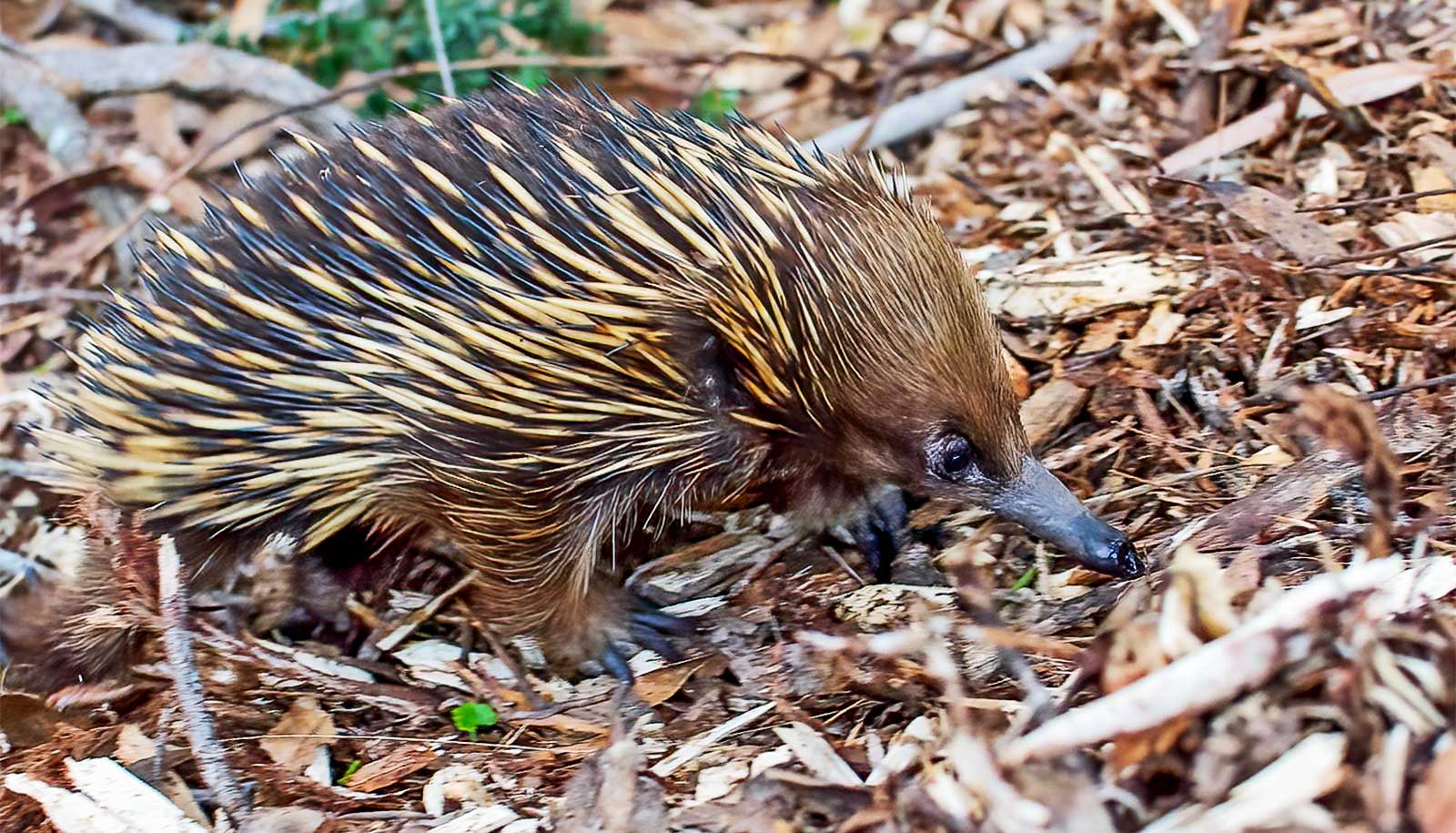A new study suggests that ground-dwelling and semi-arboreal mammals were better able to survive a mass extinction 66 million years ago than tree-dwelling mammals, due to the global devastation of forests that followed the Chicxulub asteroid impact.
The miles-wide asteroid that struck Earth wiped out nearly all the dinosaurs and roughly three-quarters of the planet’s plant and animal species.
But some creatures survived, including certain rat-sized mammals that would later diversify into the more than 6,000 mammal species that exist today, including humans.
Why did those mammals persist while others perished in the devastating mass extinction that closed the Cretaceous Period? The new study has some answers.
A possible exception to the pattern researchers report in the new study may have been the earliest primates, which likely resembled modern tree shrews and marmosets. Evidence from the study suggests that primates may have maintained a capacity for arboreal habits through the mass extinction, despite global deforestation.

Dense clouds and acid rain
The mammal study is a follow-up to a 2018 study of birds by some of the same authors that reached similar conclusions about arboreality. Both papers highlight the pivotal influence of the end-Cretaceous apocalypse, known as the K-Pg mass extinction, in shaping the early evolutionary trajectories of today’s vertebrate animals.
The asteroid impact triggered a heat pulse that ignited forest fires globally. Dense clouds of debris and soot were ejected into the atmosphere, cooling the planet and likely blocking sunlight, while acid rain poured down.
“Large-scale devastation of forested environments resulting from the Chicxulub asteroid impact likely influenced the evolutionary trajectories of multiple groups, including terrestrial mammals. Our findings are consistent with the hypothesis that predominantly non-arboreal mammals preferentially survived this mass extinction,” says Jacob Berv, a Life Sciences Fellow at the University of Michigan ecology and evolutionary biology department and Museum of Paleontology, and co-lead author of the new study in the journal Ecology and Evolution. Berv studies systematics, which involves building and analyzing evolutionary trees that reveal relationships among organisms.
Life in the trees
For the new study, the researchers performed statistical analyses of the ecological habits of modern mammals to determine if their ancestors were more likely to live in trees than on the ground, using a process called ancestral state reconstruction.
Those analyses showed—as in the bird study—that the mammals that survived the end-Cretaceous mass extinction were mostly ground-dwelling or semi-arboreal.

However, while the signal of selection against arboreality was strong and unambiguous in birds, it is less clear in mammals, says co-lead author Jonathan Hughes, a mammalogist and a doctoral candidate at Cornell University.
For example, the researchers consistently found that Euarchonta, a group that included early primates, tree shrews, and gliding mammals called colugos, maintained their arboreal habits through the extinction event and its aftermath.
“We reconstruct the ancestral primates as arboreal in our analyses, and I believe we are the first to suggest that primates possibly maintained arboreality through the K-Pg extinction,” Hughes says. “One explanation for this finding could be forested refugia: certain environments like marshes that were less susceptible to total deforestation.
“Another possible answer is that these early primates were behaviorally flexible enough to survive without trees. If they retained their arboreal adaptations, then they could have been among the first mammals to return to trees after forests recovered.”
Primate survival
Modern-day primates have been hypothesized to be resilient in the face of rapid environmental change on account of their sociality, cognitive abilities, and dietary and locomotive flexibility. At least some of these and other traits—such as omnivory and small body size—”may have contributed to the survival of representatives of the primate total group when facing the devastation of forests at the end-Cretaceous,” according to the study authors.
Evidence from some of the models in the new study also suggests that early marsupials may have held onto tree-dwelling capabilities through the K-Pg boundary.
Marsupials are mammals that today include kangaroos, wombats, bandicoots, opossums, and related animals that do not develop a true placenta and that usually have a pouch on the abdomen of the female. They suffered some of the greatest diversity losses and longest recovery times in the wake of the K-Pg impact: They were almost completely eradicated from North America and today are mainly found in Australia, Tasmania, and New Guinea.

Sloths and their closest living relatives, anteaters and armadillos, are an example of a group of mammals that began as diggers before diversifying and becoming increasingly arboreal after the K-Pg extinction.
Primates, marsupials, and sloths may have been among the first animals back in the trees once forests recovered. Those creatures “may have retained a capacity for arboreal habits across the K-Pg boundary and may have already been adapted to exploit arboreal niches relatively quickly as these habitats recovered,” the authors say.
In contrast, arboreal latecomers such as dormice, tree squirrels, and bats independently acquired arboreal habits well into the Cenozoic, the geologic era that began after the K-Pg impact 66 million years ago, according to the study.
“We can’t fully understand the composition of life on Earth today without considering the fallout from the asteroid’s impact, which altered the evolutionary trajectories of many animal lineages,” says coauthor Eric Sargis, professor of anthropology at Yale University, director of the Yale Institute for Biospheric Studies, and curator of mammalogy and vertebrate paleontology at the Yale Peabody Museum of Natural History.
“By reconstructing the ancestors of modern mammal lineages back to the extinction event, we show that ground-dwelling mammals had a selective advantage over arboreal mammals, whose habitat was destroyed, but that some tree-dwellers managed to survive.”
Mass extinction mammal fossils are rare
The study authors caution that well-preserved mammalian fossils from the time of the K-Pg extinction, and during the first million years afterward, are exceedingly rare and usually fragmentary. Unlike the findings of the previous paper on birds, which were strongly supported by both phylogenetic and fossil evidence, “definitive assessments of selective patterns among K-Pg boundary-crossing mammals will remain elusive in the absence of additional fossil evidence,” they wrote.
“The fossil record around this time period is pretty sparse,” Berv says. “The statistical models we use make the best guesses they can, but the uncertainty is still significant. In the absence of direct fossil evidence, our conclusions are conditional on the accuracy of our assumptions.”
The mammal study features two new methods not used in the 2018 bird paper. First, instead of simply modeling transitions between arboreal, semi-arboreal, and nonarboreal states among mammals, the researchers looked at changes in the frequency of those transitions through time. Their data revealed a large spike in the frequency of those transitions associated with the K-Pg boundary.
Second, instead of running their simulations on a single “best” evolutionary tree, they ran the simulations over a set of 1,000 credible evolutionary trees—and still found a strong signal of nonarboreal mammals surviving the extinction.
Additional coauthors are from Cambridge University, City University of New York, and Yale University. The National Science Foundation and the Michigan Life Science Fellows funded the work.
Source: University of Michigan


